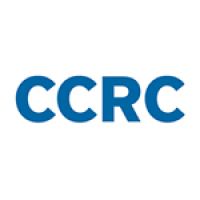By Davis Jenkins, Konrad Mugglestone, and Josh Wyner
Over the past 20 months, the Aspen Institute College Excellence Program (Aspen) and the Community College Research Center (CCRC) have worked with 10 community colleges to spearhead the next phase of community college reform. The three-year project—called Unlocking Opportunity—has two main objectives: (1) to increase the number of students in high-value programs that lead directly to a well-paid job or to transfer and a bachelor’s degree in the student’s field of interest, and (2) to decrease the number of students in lower-opportunity pathways that are unlikely to prepare them for good jobs or further education at the bachelor’s level and beyond.
Leaders and teams from each participating college set specific quantitative goals—which, if met, would have an aggregate impact on post-graduation outcomes for over 28,000 students—and developed reform strategies to achieve them. Our shared aim is that these reforms will enable the 10 community colleges to achieve their central purposes: fostering economic mobility and developing regional talent. As importantly, we aim to ensure that these colleges’ successes can be replicated by others nationally.
Over the first 20 months of the project, we uncovered several important lessons for the field. In the remaining 16 months, we will translate those lessons into case studies, assessment tools, and other products to help more colleges learn from the 10 community college teams that took on this important work.
Alongside this blog, we are releasing the first set of tools:
- The Classifying Community College Programs by Post-Completion Success in Transfer and Workforce Guide, which includes the conceptual framework and technical guidance for classifying all programs—and subsequently all enrollments and awards—into broad categories based on post-completion value;
- An Enrollment Analysis Tool that empowers colleges to visualize and analyze their enrollments to identify patterns and possible strategies to improve their programs’ post-completion value;
- An Inquiry Guide to further aid in analysis, which includes essential questions for college leaders to consider after they classify their enrollment data.
The first step in Unlocking Opportunity was for each of the 10 network colleges to set specific goals for increasing the number of students in high-value programs, defined as 1) workforce programs that lead to jobs that enable students to support themselves and 2) pre-major programs likely to lead to successful transfer and bachelor’s degree attainment in students’ major field of interest. Each college also set goals to decrease the number of students in programs unlikely to lead to strong post-graduation success, including workforce programs that lead to low-wage work and transfer tracks (such as general studies) that fail to prepare students to transfer and earn bachelor’s degrees in their major at a four-year college or university with no excess credits.
“I think we all had an idea of what a livable wage would be for our students, but reviewing the research and data really helped us understand what we need to do to provide quality educational outcomes that impact earning potential for our students,” said Laramie County Community College President Joe Schaffer. “It is not only important for our students to have the opportunity to earn a living wage, but it is important for the communities we serve to have individuals that can positively impact economic growth in our service area and region.”
Combined, the 10 community colleges in Unlocking Opportunity aim to enroll more than 28,000 additional students in high-value programs and 16,000 fewer students in low-value programs by the end of 2025.
The tools released today are designed to support all community colleges in conducting the same analysis of their programs in order to set goals and devise reforms that strengthen the value of their credentials and ensure that more students enroll in and complete programs that deliver strong post-graduation success. As college leaders, improvement teams, and researchers use these materials, we wanted to share some of what we learned from Unlocking Opportunity colleges as they went through this process. Here are a few takeaways:
Too many students are in general studies tracks without clear alignment to transfer programs or workforce programs with strong labor market value. Across the 10 colleges, many students are enrolled in “General Studies” or other program tracks that tend to be catch-alls for students who do not have clear transfer or career goals. In the 2021-22 academic year, nearly 4 of every 10 associate degrees awarded by community colleges nationally were in General Studies (sometimes called Liberal Studies1). Research indicates that graduates of these and similar programs cannot apply many of their credits to a bachelor’s in their major of interest. Other research finds that such graduates typically do not secure well-paying jobs after community college. Armed with this research and their own data, several Unlocking Opportunity colleges have resolved to eliminate general studies tracks and ensure all students get help choosing a pre-major transfer or workforce program and developing an individualized education plan aligned with their transfer and career goals.
Lower-income students are disproportionately enrolled in lower-value programs. Unlocking Opportunity colleges—and community colleges overall—educate more students from lower-income backgrounds than their four-year counterparts. Network colleges found that students identified as low-income2 were 10 percentage points more likely to be in lower-value transfer or workforce pathways than students from higher-income families. As college leaders across the network devise reforms, they are considering how to strengthen programs and increase the number of students on high-value pathways, including students from lower-income backgrounds and other historically underserved groups.
Pre-health students often fail to complete programs of value. Most of the Unlocking Opportunity colleges have large numbers of students taking prerequisite courses before seeking admission to selective health care programs such as associates in nursing, radiologic or surgical technology, and dental hygiene, which typically lead to jobs that pay well above living wages. Most such “pre-health” students will not be accepted into these high-value programs, which have constricted enrollments due to the limited availability of clinical slots, high equipment costs, and other factors. Unlocking Opportunity colleges discovered that those students either leave college or complete programs poorly aligned with both bachelor’s degree programs after transfer and good jobs in their regional labor markets. As a result, several colleges are taking steps to increase the number and diversity of students entering and completing selective healthcare programs. They are also helping those not selected to develop alternative plans for earning credentials that lead to living-wage jobs in healthcare or other fields either directly after earning an associate’s degree or following transfer and bachelor’s attainment.
Dual enrollment students are often not guided to develop post-high school career and education plans. Like community colleges across the country, Unlocking Opportunity colleges enroll large numbers of high school students in dual enrollment courses. Because these students are typically not formally enrolled in a specific college program, colleges generally categorize them as “unclassified.” Unlocking Opportunity colleges have found that a substantial number of dual enrollment students do not pursue postsecondary education or training after high school, including disproportionate numbers from groups underrepresented among those with postsecondary credentials. In response, Unlocking Opportunity colleges are implementing reforms to help dual enrollment students explore career and college interests and develop (at least) a preliminary college education plan.
Of course, the analyses upon which these observations are based are only a diagnostic starting point for designing and implementing reforms. The 10 Unlocking Opportunity college teams are doing impressive work to strengthen their transfer and workforce programs, as well as improving supports to increase the number of students who are helped to explore interests and opportunities, choose a program of study, and create individualized education plans aligned with strong post-graduation success.
For colleges interested in this work, we hope the new resources on classifying programs (link to landing page for those) provide a valuable starting place. Aspen and CCRC encourage community colleges to explore the new tools and continue to follow our work in our Aspen and CCRC newsletters as more research emerges about the effectiveness of Unlocking Opportunity reforms.
1 Like General Studies, Liberal Studies is a catch-all phrase; it should not be confused with distinct liberal arts tracks connected to specific liberal arts majors that are part of strong transfer pathways.
2 Colleges were permitted to define low-income or Pell depending on their available data. Some chose Pell eligible to get a better count of low-income students, but some could only capture Pell recipients.
This work is made possible thanks to generous support from Arnold Ventures, Ascendium Education Group, ECMC Foundation, and Strada Education Foundation. If you have additional questions about Unlocking Opportunity, please email us at unlockingopportunity@aspeninstitute.org.





